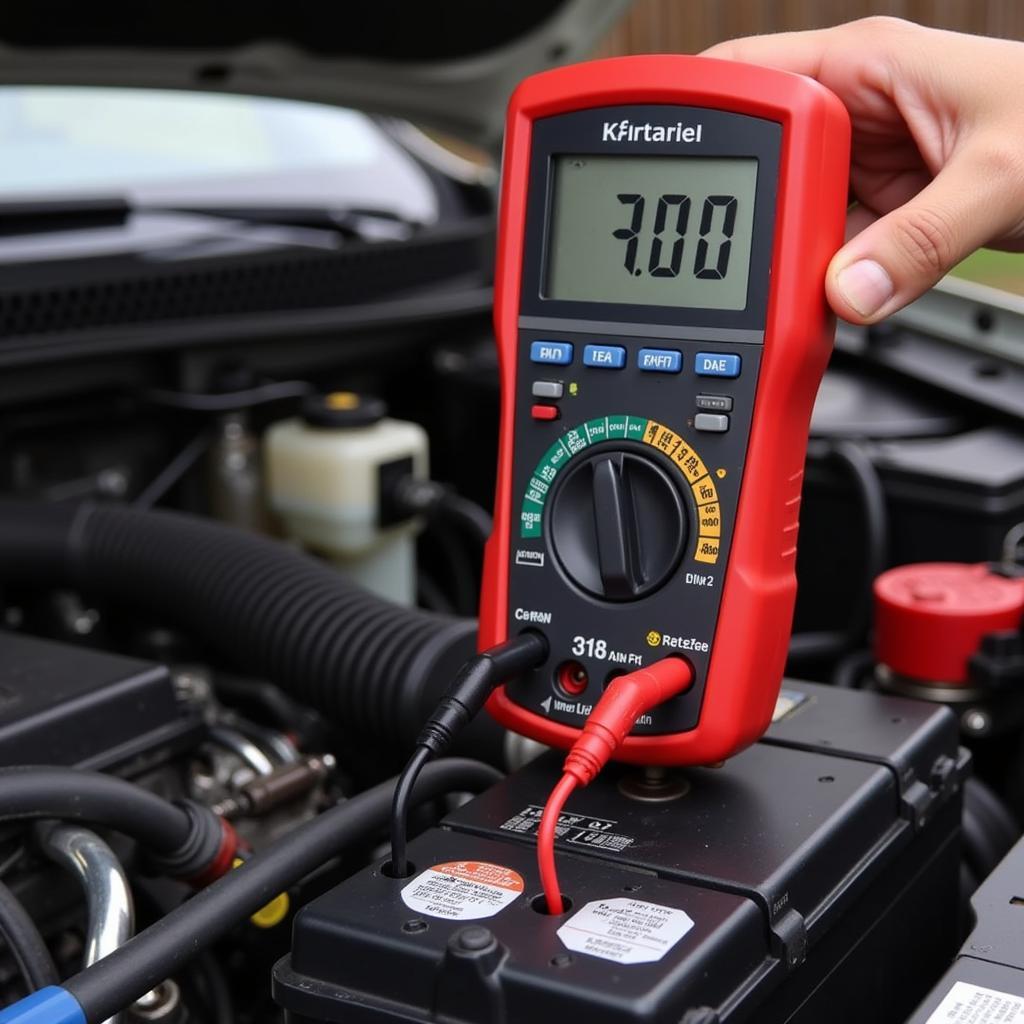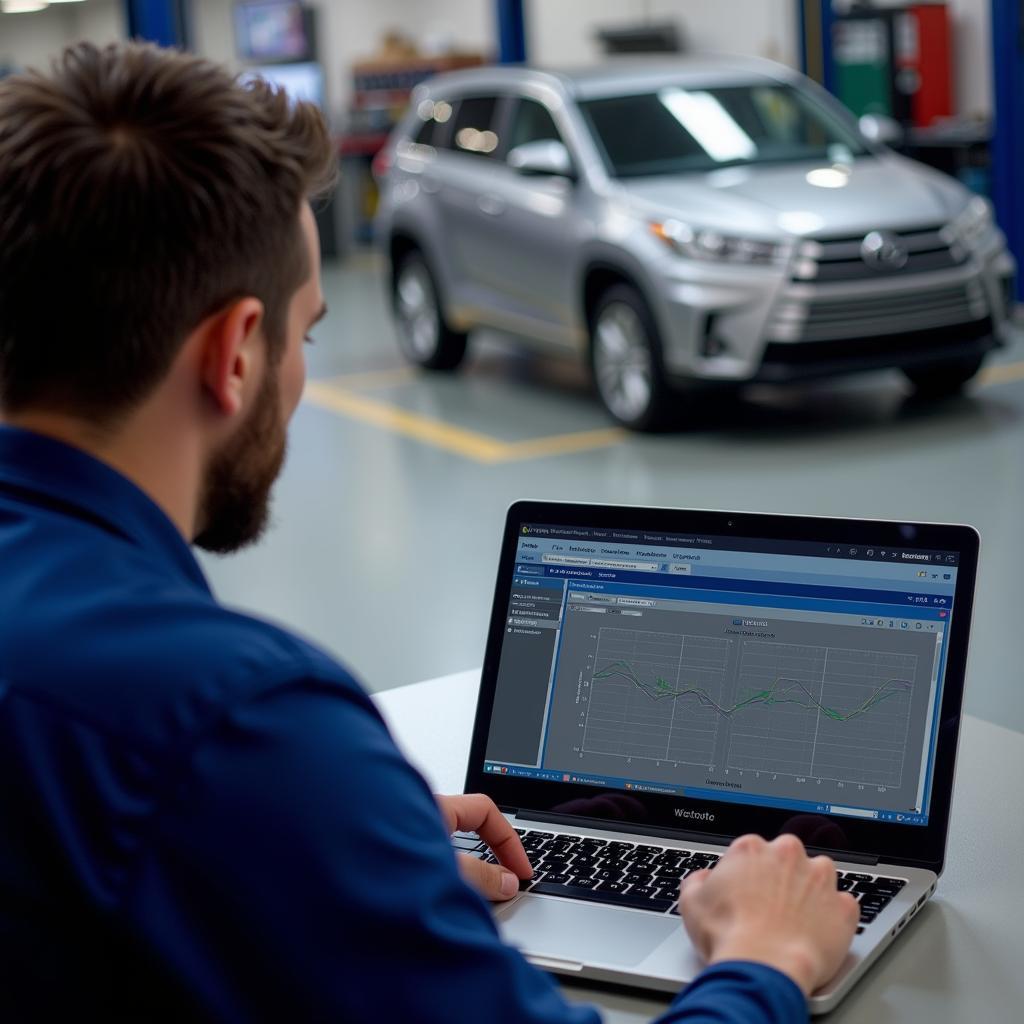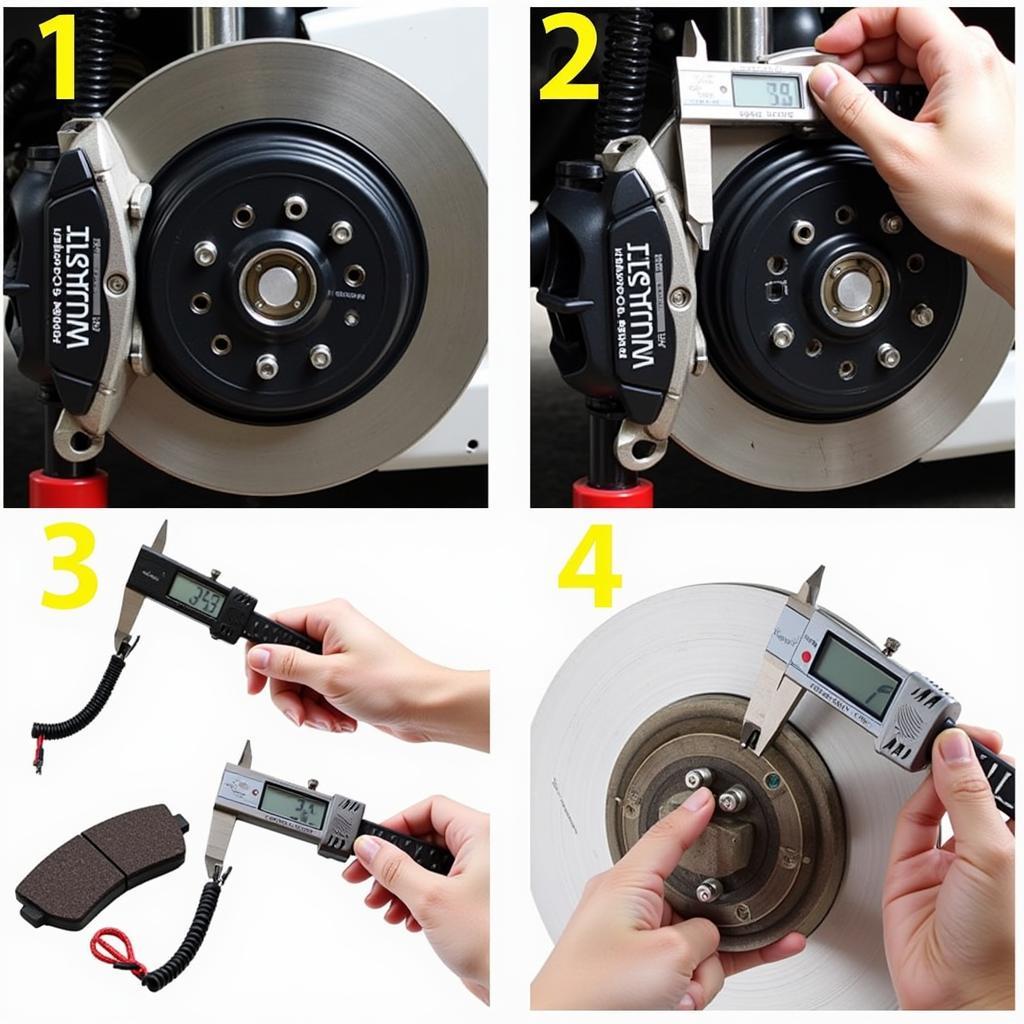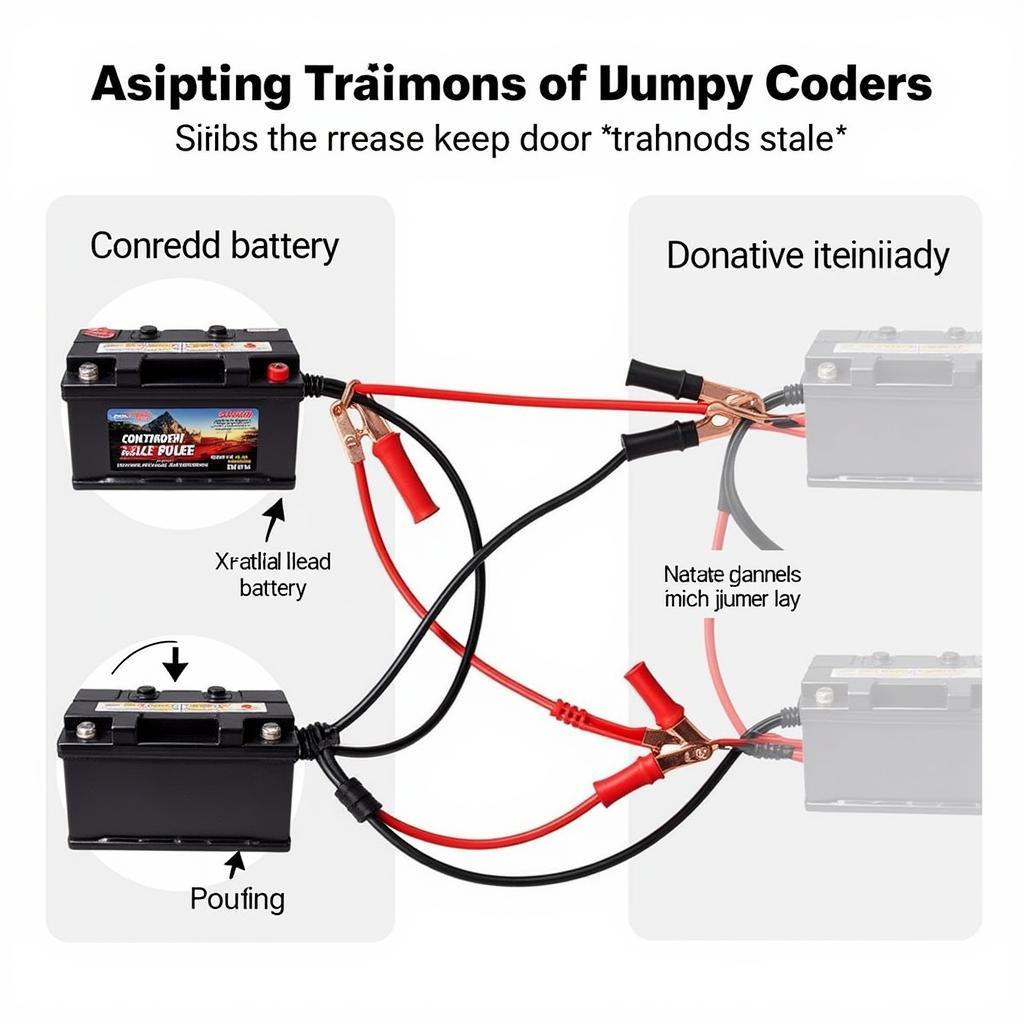Your car isn’t starting and you’re stranded? Don’t panic. We understand the frustration and inconvenience this can cause. This guide will walk you through common reasons why your car won’t start, offer practical troubleshooting steps, and explain how remote diagnostics and software solutions can get you back on the road quickly.
 Checking car battery with multimeter
Checking car battery with multimeter
One of the most common culprits when your car isn’t starting is a dead battery. You’ll notice dimming headlights, a clicking sound when you turn the key, or complete electrical silence. Jump-starting can be a temporary fix, but if the issue recurs, it’s time for a new battery. Sometimes, a jump start can lead to unexpected issues like no power steering afterwards. If you’ve experienced no power steering after jump starting, it’s worth investigating further.
Common Reasons Your Car Isn’t Starting
There are numerous reasons why your car isn’t starting, ranging from simple fixes to more complex problems. Here’s a breakdown of some of the most frequent causes:
- Dead Battery: As mentioned, this is the most common culprit.
- Faulty Alternator: The alternator recharges the battery while the engine is running. A failing alternator won’t charge the battery properly, leading to a no-start situation.
- Starter Motor Problems: The starter motor cranks the engine to start the combustion process. A faulty starter might produce a clicking sound or no sound at all.
- Fuel System Issues: A lack of fuel, a clogged fuel filter, or a malfunctioning fuel pump can prevent the engine from starting.
- Ignition System Malfunctions: Issues with the ignition switch, spark plugs, or ignition coils can prevent the spark needed to ignite the fuel.
- Anti-theft System: Sometimes, the anti-theft system can malfunction and prevent the car from starting. Understanding what is anti theft transfer can help in such situations. Certain car models, like the Corolla, have specific anti-theft features, and knowing how to tell if corolla has anti theft can be useful.
Troubleshooting a Car That Won’t Start
When your car isn’t starting, here’s a step-by-step guide to help you troubleshoot the problem:
- Check the Battery: Inspect the battery terminals for corrosion. Clean them with a wire brush if necessary. Try jump-starting the car. If it starts, the battery is likely the problem.
- Listen for the Starter: When you turn the key, do you hear a clicking sound? This might indicate a faulty starter motor.
- Check the Fuel Gauge: Make sure you have enough fuel. If the gauge is faulty, try adding a small amount of fuel to see if it helps.
- Inspect the Spark Plugs: Remove a spark plug and check for signs of wear or damage.
- Consider the Anti-Theft System: Try using a different key or check your owner’s manual for instructions on resetting the anti-theft system.
Why is my car not starting even with a new battery?
Even with a new battery, several other components can prevent your car from starting. This includes a faulty alternator, starter motor issues, or problems with the fuel or ignition system.
Can remote diagnostics help if my car won’t start?
Yes, remote diagnostics can be incredibly helpful. This technology allows technicians to access your vehicle’s computer system remotely and identify the root cause of the problem.
 Mechanic performing remote car diagnostics
Mechanic performing remote car diagnostics
The Power of Remote Diagnostics and Software Solutions
Imagine a technician diagnosing and fixing your car’s starting problem without even being physically present. That’s the power of remote diagnostics and software solutions. These cutting-edge technologies allow specialists to connect to your vehicle’s computer system remotely, identify the issue, and sometimes even implement software updates to resolve the problem. This can save you time, money, and the hassle of towing your car to a repair shop.
“Remote diagnostics is revolutionizing the automotive repair industry. We can now identify and fix problems much faster and more efficiently, minimizing downtime for our customers,” says John Smith, Senior Automotive Diagnostic Technician at Acme Auto Repair.
Conclusion
A car that won’t start can be a major headache. By following these troubleshooting steps and considering the benefits of remote diagnostics, you can get your car back on the road quickly. Don’t let a car that isn’t starting ruin your day. Take proactive steps to diagnose and resolve the issue.
“With advancements in remote diagnostics, even complex car starting problems can often be solved remotely, saving drivers valuable time and money.” – Sarah Jones, Lead Software Engineer, AutoTech Solutions.
FAQ
- What are the most common reasons a car won’t start? Dead battery, faulty alternator, starter motor issues, fuel system problems, ignition system malfunctions, and anti-theft system issues are common culprits.
- How can I check if my battery is dead? Look for dimming headlights, a clicking sound when turning the key, or no electrical activity. Try jump-starting the car.
- What should I do if my car won’t start even with a new battery? Check the alternator, starter motor, fuel system, and ignition system.
- Can remote diagnostics fix a car that won’t start? Yes, in some cases, remote diagnostics can identify the problem and even implement software updates to fix the issue.
- What are the benefits of remote diagnostics? Remote diagnostics saves time, money, and the hassle of towing.
- How does remote diagnostics work? A specialist connects to your vehicle’s computer system remotely to diagnose and sometimes fix the problem.
- Is remote diagnostics expensive? Remote diagnostics is often more affordable than traditional repair methods.


